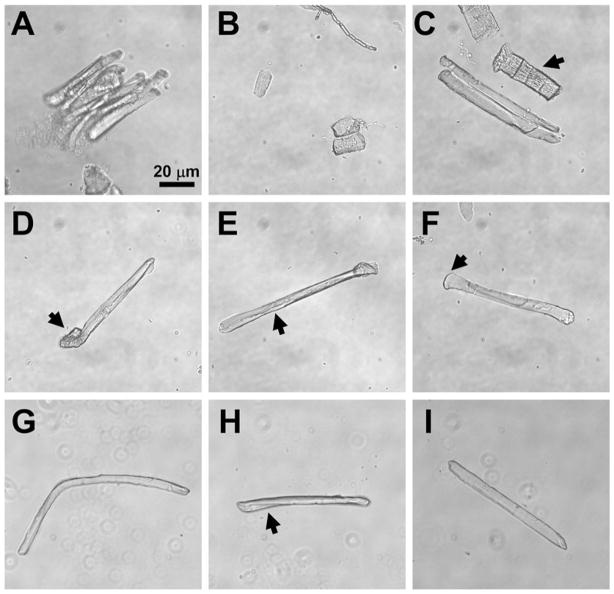Fig. 3.
(a) Clumped muscle fibers indicate that the FDB muscle is not sufficiently digested or requires additional disruption with a pipette. (b) Hypercontracted muscle fibers result from excessive pipetting of muscle fibers. (c) Damaged FDB fibers (arrow) are generally wider than health fibers (center) and lack the smooth membrane surface of healthy fibers. (d) Curled ends of FDB fibers (arrow) should exclude such fibers from use in Ca2+ spark experiments. (e) Wrinkled sarcolemmal membranes (arrow) also should exclude FDB fibers from use in experiments. (f) Wide ends of FDB fibers (arrow) indicate a fiber that has not properly resealed at the end and should be excluded from experimentation. (g) Excessively long or bent FDB fibers so are not optimal for use in Ca2+ spark experiments. (h) Slight bending or twisting of an FDB fiber usually does not exclude a fiber from use in experiments. (i) An example of an ideal FDB fiber for experimentation. The long, rod-like structure, smooth membrane, and average size are all characteristics that indicate a fiber useful for experimentation.

